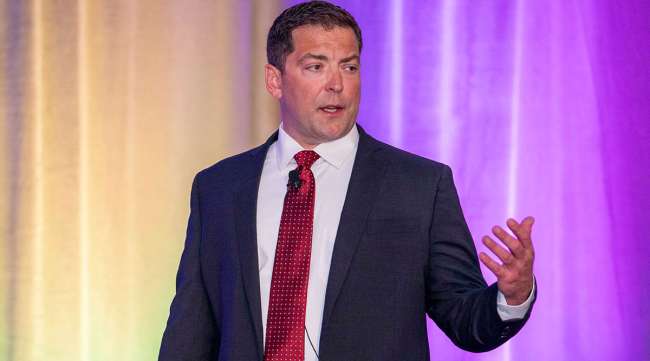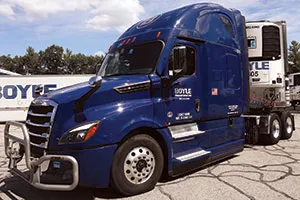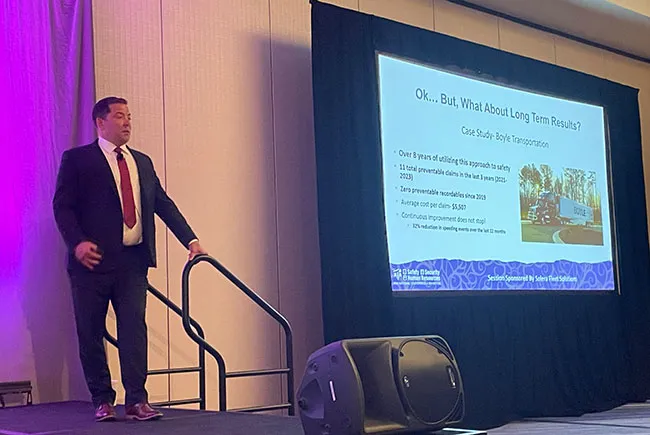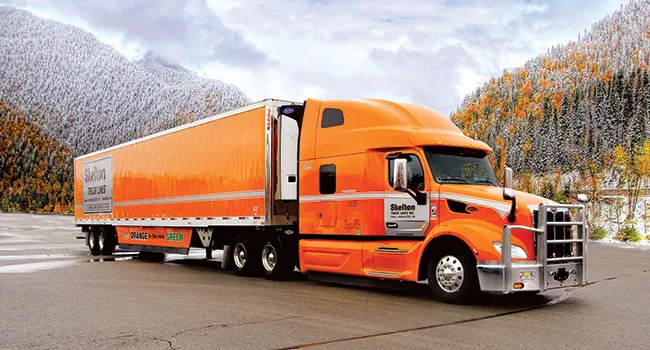Technology Tools Help Carriers Reduce Risk, Improve Safety

[Stay on top of transportation news: Get TTNews in your inbox.]
PHOENIX — Increased amounts of actionable data, onboard safety technology and new equipment are helping carriers focus their safety efforts, customize coaching and reduce the risk of a crash, industry experts said at a recent event.
“Data analysis and predictive analytics are two of the most important things safety professionals do now. You want to be proactive and measure your data,” said Mike Lasko, vice president of environment, health and safety at Skelton Truck Lines and Boyle Transportation. “Data analytics identifies your risk exposures so you can focus on your high-risk drivers, routes, operational practices and maintenance issues.”
Lasko shared his insights during American Trucking Associations’ 2024 Safety, Security and Human Resources National Conference and Exhibition and said today’s safety directors have an immense amount of data from various sources. The event was held April 25-27.
Onboard cameras are one of the most valuable data collection tools he identified because they enable safety leaders to identify risky behaviors and provide targeted training. Camera systems can be integrated with learning management systems to assign training based on driver performance, such as a specific number of speeding events.

Boyle Transportation has a full suite of ADAS, Lasko says. (John Sommers II for Transport Topics)
“At Boyle we did that and saw a 61% reduction in speeding events in six months,” Lasko said, adding that learning management systems make it easy to assign, provide and analyze training sessions. “We’re identifying knowledge gaps and acting on them.”
Lasko avoids introducing discipline into the coaching process and has found it more effective to ask drivers to explain any triggering event. “We’re not perfect, and it is unreasonable to expect us to be. I say, ‘Watch this video. What did you do wrong? What did you do right? What could you do better?’”
Drivers in the workforce today are more accepting of technology and metrics-driven approaches, he said, but the company still offers a monthly incentive and tries to gamify improvements through monthly competitions and gifts. “It has almost become a lever I can pull anytime we have a trend arise,” he said.
Advanced driver assistance systems also provide actionable data and dramatically reduce the risk of catastrophic accidents. Combining ADAS information with camera insights provides even more information.
“At Boyle, we have a full suite of ADAS — forward-looking radar, emergency braking, lane departure. I strongly recommend if you don’t have ADAS in your fleet, look at getting it,” Lasko said.

Lasko says Boyle hasn't recorded a preventable accident since 2019. (Mindy Long for Transport Topics)
Commercial driver license monitoring services and automatic motor vehicle record updates also aid safety professionals. “There is no more waiting 12 months to discover a change in CDL status,” Lasko said.
Safety and maintenance management systems can help carriers capture data from multiple sources, collect it all under one roof and uncover new insights. Lasko said it also can track certain behaviors.
“At my company, we require our drivers through our maintenance management system to take a picture of the hook anytime they hook to a trailer,” he said. “We started this in 2017 and have had zero dropped trailers since we implemented this.”
Check out Transport Topics' updated Top 100 list of the largest logistics companies in North America, and explore how the industry's top players have adapted to a tough freight market and are preparing for the future. Tune in above or by going to RoadSigns.ttnews.com.
Boyle recommends digging deep to identify the root cause of an issue. “Sometimes you can find out the root cause is very far removed from what actually happened,” he said.
At one of Lasko’s former employers, there was an incident in which a mechanic slipped on grease and fell, causing an injury. It resulted from a parked truck leaking oil, but ultimately Lasko learned that the truck hadn’t received preventive maintenance for nine months because it had been transferred from another terminal but was never entered into the PM system.
RELATED: Advances in Diagnostics Help Technicians Identify Problems, Streamline Repairs
“An administration error that happened nine months ago led to a mechanic slipping on grease,” Lasko said. “Today, we’re companywide problem-solvers. You’re going to find root causes that will lead into other functions of the business.”

Lasko said that, over five months, Skelton Truck Lines saw a 71% decrease in risky driving events. (Boyle Transportation)
Lasko stressed that it is important to eliminate any imaginary barriers that limit the safety department. “Empower your safety department to eliminate risks in all areas,” he said.
He noted that taking a proactive approach to safety is driving results. Boyle Transportation hasn’t had a rear-end collision since 2014 and experienced 11 total preventable claims from 2021-2023. It has had zero preventable recordable incidents since 2019 and experiences an average cost per claim of $5,507. Lasko also noted that in a span of five months, Boyle-owned Skelton Truck Lines saw a 71% reduction in risky driving events, a 69% reduction in speeding events, an 87% reduction in following distance events, a 50% reduction in claim frequency and a 92% reduction in the average cost per claim.
Lasko said despite those gains, continuous improvement does not stop. That applies to driver performance as well as data quality, which safety professionals must monitor. “It is important to be able to analyze the data you’re looking at and determine if it is accurate,” he said.
Want more news? Listen to today's daily briefing below or go here for more info:





